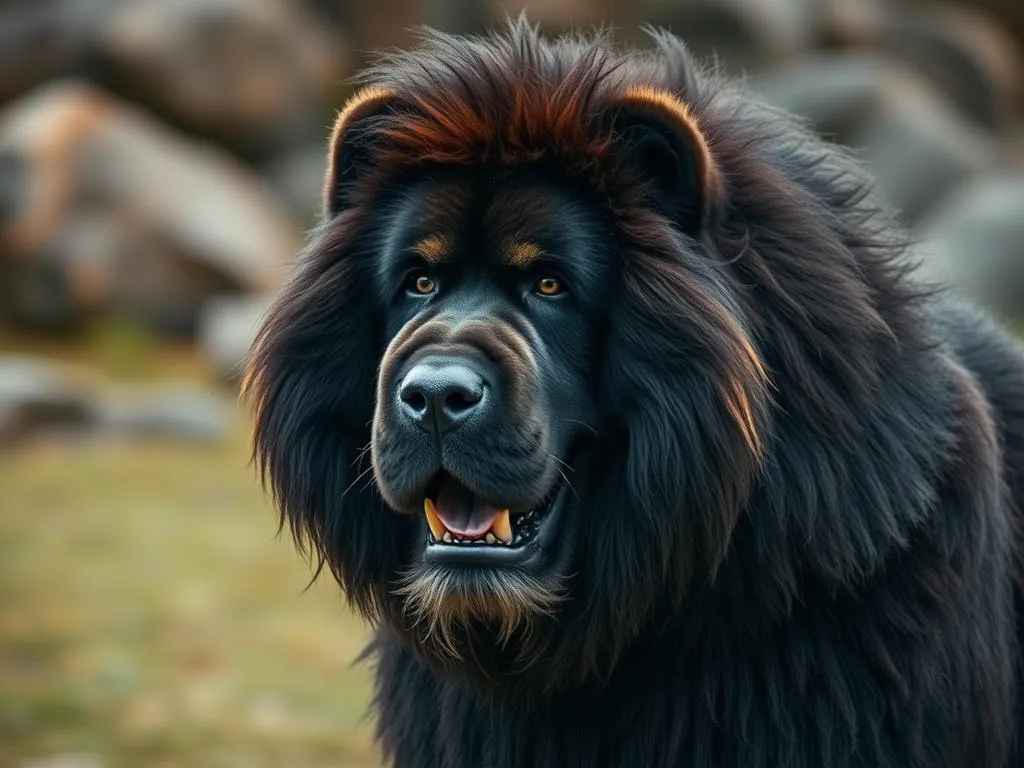
Understanding different dog breeds is essential for anyone considering adding a furry companion to their family. Each breed has unique characteristics that can impact training, care, and companionship. Among the various breeds, the Tibetan Mastiff stands out for its impressive stature and rich history. This article delves into the intriguing world of the Tibetan Mastiff, covering its origins, physical traits, temperament, health considerations, training needs, and the responsibilities of ownership.
Understanding Dog Breeds
What is a Dog Breed?
A dog breed refers to a specific group of domesticated dogs that share common ancestry and exhibit similar characteristics, such as size, coat type, temperament, and behavior. Breeds are often developed for particular purposes, whether it be herding, guarding, or companionship. The distinct traits of a breed play a crucial role in how the dog interacts with its environment and the people around it.
Importance of Dog Breeds
Understanding dog breeds is vital for prospective pet owners. Different breeds can significantly influence one’s lifestyle, including the level of exercise required, grooming needs, and training challenges. For example, some breeds may demand more physical activity and mental stimulation than others, while certain breeds may require specialized grooming due to their coat type. Additionally, recognizing the temperament of a breed can help potential owners find a dog that fits well with their family dynamics.
The Tibetan Mastiff: An Overview
History of the Tibetan Mastiff
The Tibetan Mastiff has a storied history that dates back over 3,000 years to the Himalayan region of Tibet. Historically, these dogs were used by nomadic cultures to protect livestock from predators such as wolves and leopards. Their imposing size and fierce loyalty made them exceptional guardians. In Tibetan culture, the Tibetan Mastiff is revered, often considered a symbol of strength and protection.
Physical Characteristics
The Tibetan Mastiff is known for its impressive size. Males typically weigh between 90 to 150 pounds, while females average between 70 to 120 pounds. Their height ranges from 24 to 30 inches at the shoulder. One of the most distinctive features of the Tibetan Mastiff is its thick double coat, which can come in a variety of colors, including black, brown, and blue-grey, often with tan markings.
Their broad head, heavy bone structure, and thick neck contribute to their majestic appearance. Additionally, their eyes are typically dark brown and have a calm yet alert expression, reflecting their protective nature.
Temperament and Behavior
The temperament of the Tibetan Mastiff can be described as confident and independent. They are known for their loyalty to their families but can be aloof with strangers. This breed is naturally protective, making them excellent watchdogs. When raised in a loving environment, Tibetan Mastiffs can be gentle and affectionate, especially towards children.
However, potential owners should be aware that this breed can exhibit stubbornness and a strong-willed nature. Socialization from a young age is crucial to ensure that they develop into well-adjusted adults. They can interact well with other pets if introduced properly, but their strong guarding instincts may lead to territorial behavior.
Health Considerations for Tibetan Mastiffs
Common Health Issues
Like many large breeds, the Tibetan Mastiff is prone to certain genetic health issues. Hip dysplasia is a common concern, as are various eye conditions such as cataracts and entropion. Regular veterinary check-ups can help catch these issues early and manage them effectively.
Lifespan and Aging
The average lifespan of a Tibetan Mastiff is around 10 to 14 years. As they age, owners should be observant of any signs of health deterioration, such as decreased energy levels, changes in appetite, or mobility issues. Early detection and treatment can significantly enhance the quality of life for aging dogs.
Regular Health Check-ups
Regular veterinary visits are essential for maintaining the health of a Tibetan Mastiff. It is important to keep up with vaccinations, parasite control, and dental care. A veterinarian can also provide guidance on nutrition and any necessary dietary adjustments as the dog ages.
Training and Socialization
Basic Training Techniques
Training a Tibetan Mastiff requires consistency, patience, and positive reinforcement. Because of their independent nature, they may not respond well to harsh training methods. Instead, using treats and praise can motivate them to learn commands and desired behaviors. Basic commands such as sit, stay, and recall are essential for ensuring their safety and good behavior.
Socialization Needs
Early socialization is crucial for a Tibetan Mastiff to develop into a well-rounded adult dog. Exposing them to a variety of environments, people, and other animals can help reduce fear and aggression towards unfamiliar situations. Regular visits to dog parks and puppy classes can be beneficial for their social development.
Behavioral Challenges
While Tibetan Mastiffs are generally calm, they can exhibit some behavioral challenges, including stubbornness and protective instincts. Owners may face issues such as excessive barking or guarding behavior. Addressing these challenges early with proper training techniques and socialization can lead to a more balanced and obedient dog.
Nutrition and Care
Dietary Needs
A balanced diet is essential for maintaining the health of a Tibetan Mastiff. High-quality commercial dog food formulated for large breeds is often recommended. It is important to monitor their weight, as obesity can exacerbate health issues such as hip dysplasia. Consulting with a veterinarian can help determine the best diet and feeding schedule for individual dogs.
Grooming Requirements
The Tibetan Mastiff has a thick double coat that requires regular grooming to prevent matting and reduce shedding. Weekly brushing is usually sufficient, but during shedding season, more frequent brushing may be necessary. Bathing should be done as needed, typically no more than once every few months, to avoid stripping their coat of natural oils.
Exercise Requirements
Despite their size, Tibetan Mastiffs do not require excessive exercise. A couple of daily walks, along with playtime in a secure yard, can meet their exercise needs. They enjoy activities that engage their minds, such as puzzle toys or obedience training sessions.
Living with a Tibetan Mastiff
Ideal Living Environment
A Tibetan Mastiff thrives in a home with ample space, making houses with yards preferable over apartments. They enjoy outdoor time but should not be left outside unsupervised due to their guarding instincts. Providing a secure, fenced area allows them to roam and explore safely.
Family Life with a Tibetan Mastiff
Tibetan Mastiffs can adapt well to family life, often forming strong bonds with their human companions. They tend to be gentle with children, but supervision is necessary, especially with younger kids. Their protective nature can also be a comforting presence for elderly family members, providing companionship and security.
Responsibility of Ownership
Owning a Tibetan Mastiff comes with significant responsibilities. Potential owners should be prepared for the time commitment required for training, socialization, and exercise. Financial considerations include regular veterinary expenses, quality food, and grooming supplies. Understanding the unique needs of this breed is crucial for ensuring a happy and healthy life together.
Conclusion
The Tibetan Mastiff is a magnificent breed with a rich history and unique characteristics. Their loyalty, protective nature, and strong presence make them exceptional companions. However, prospective owners must consider their lifestyle and ability to meet the breed’s needs. By understanding the requirements for care, training, and socialization, individuals can enjoy a fulfilling relationship with a Tibetan Mastiff, celebrating the joy that comes with having such a remarkable dog as part of their family.









